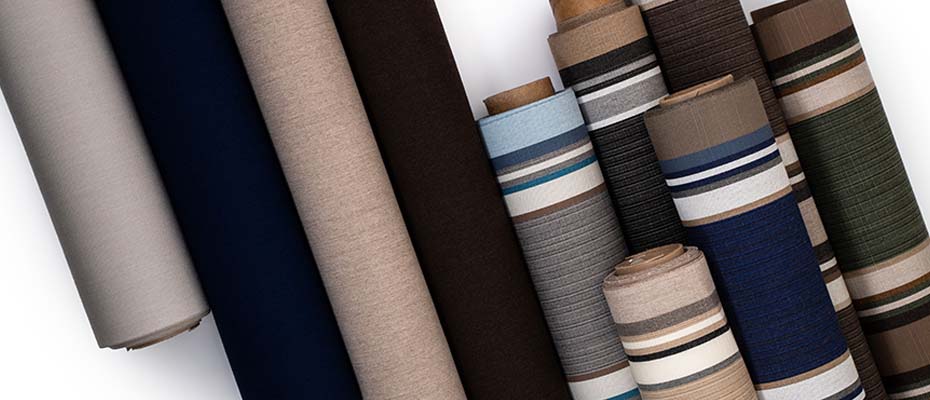Understanding Markisentuch: The Ultimate Guide
When it comes to outdoor comfort and aesthetic appeal, **markisentuch** plays a pivotal role. These versatile awning fabrics provide shade, style, and protection against the elements, enhancing spaces like patios, balconies, and gardens. In this article, we’ll explore the different types, benefits, installation tips, and maintenance guidelines for markisentuch.
Types of Markisentuch Fabrics
Markisentuch comes in a variety of materials, each with its unique benefits and applications. The most common types include acrylic, polyester, and PVC. **Acrylic fabrics** are popular for their UV resistance and vibrant colors, making them suitable for residential and commercial settings alike.
Acrylic Fabrics
Acrylic is often chosen for markisentuch due to its durability and weather resistance, meaning your awning will retain its color and resilience against fading. Furthermore, acrylic materials allow for optimal light filtration, ensuring your outdoor space is bright yet shaded. An excellent example is the Sunbrella fabric, well-known for its long-lasting performance and various design options.

Polyester and PVC Options
Polyester markisentuch is another suitable choice, offering both strength and flexibility. It is often coated with a water-resistant treatment, which makes it ideal for diverse weather conditions. Meanwhile, PVC fabrics are recognized for their extreme water resistance and are most commonly used in commercial applications.
Benefits of Using Markisentuch
The benefits of installing markisentuch extend beyond its aesthetic appeal. One of the primary reasons homeowners choose these awnings is to enhance their outdoor living environment. **Markisentuch provides shade**, which protects furniture from UV damage, keeping your outdoor spaces looking newer for longer.
Enhanced Comfort Outdoors
Markisentuch creates a comfortable atmosphere for outdoor gatherings. When temperatures rise, having a shaded area can significantly lower the ambient temperature, allowing you to enjoy those summer days without feeling overheated. Therefore, adding markisentuch to your home can enhance your outdoor experiences, allowing for more gatherings with friends and family.

Energy Efficiency Benefits
Another considerable advantage of markisentuch is its contribution to energy savings. By blocking direct sunlight, these awnings can reduce indoor temperatures, thus lessening your reliance on air conditioning. This light reduction can lead to lower energy bills, providing a financial incentive for installation.
Installation Tips for Your Markisentuch
Installing markisentuch can be straightforward, but some essential tips can help ensure a successful project. Proper installation is critical to maximizing your awning’s durability and functionality. First, always measure your space accurately before making a purchase to avoid sizing errors.
Choosing the Right Location
Decide the best location for your markisentuch. The position should not only provide optimal shade but also enhance your living space’s aesthetic. Consider any obstructions, such as nearby trees or buildings that may impact sunlight exposure. Once positioned correctly, mark the area clearly for wall or frame installation.
Step-by-Step Installation Guide
Start by securing the mounting brackets to your chosen wall or frame with the appropriate hardware. After that, attach the **markisentuch fabric** to these brackets, ensuring it is taut for the best appearance and functionality. Once everything is securely in place, test the movement of the awning to ensure it operates smoothly.
Maintenance and Care for Markisentuch
To extend the lifespan of your markisentuch, regular maintenance is essential. While many materials are durable, performing routine checks can prevent issues and keep your awning looking fresh. Cleaning is a crucial aspect of maintenance; remove any dirt or mildew that may accumulate over time.
Cleaning & Care Techniques
Use a soft brush to gently scrub the surface and then rinse with a hose to remove debris. For tougher stains, consider a mild soap solution. Avoid using harsh chemicals that could degrade the fabric. Regular cleaning not only maintains the appearance but also ensures longevity.
Protecting from the Elements
During severe weather, consider retracting your markisentuch to prevent wind damage. Additionally, investing in protective covers can help preserve your awning when not in use. These simple procedures ensure that your markisentuch remains functional and stylish for years to come.
Key Takeaways
- Markisentuch is available in various materials, with acrylic fabrics being popular for their aesthetic and functional benefits.
- They provide shade, enhance outdoor comfort, and can significantly improve energy efficiency.
- Proper installation and maintenance of markisentuch play a crucial role in maximizing its benefits.
FAQ
1. What is the best fabric option for markisentuch?
The best fabric often depends on your specific needs. Acrylic fabrics are durable and fade-resistant, making them ideal for residential use, while PVC options are better for commercial settings due to their water resistance. Consider your environment and desired aesthetics when making a choice.
2. How often should I clean my markisentuch?
It is advisable to clean your markisentuch at least twice a year, or more frequently if you live in a dusty or wet climate. Regular maintenance helps prevent mildew and keeps the fabric looking new, extending its lifespan.
3. Can markisentuch be used in windy conditions?
While markisentuch is designed to withstand typical outdoor elements, they should be retracted during high winds to avoid damage. Always check the weather before leaving your awning extended.
4. What are the benefits of using markisentuch for energy efficiency?
Markisentuch helps lower indoor temperatures by blocking direct sunlight, which can result in lower cooling costs during hot seasons. They are a sustainable choice contributing to an eco-friendly lifestyle.
5. How do I choose the right size for my markisentuch?
Choosing the correct size involves measuring your shading area accurately. Ensure you account for the space you want to cover and the awning projection. It’s recommended to consult with a professional for an optimal fit.
6. Are there different types of markisentuch for various weather conditions?
Yes! Fabrics are available that offer enhanced UV protection, water resistance, and durability suitable for different climates. Choosing the right material helps ensure the awning performs well regardless of the weather backdrop.
